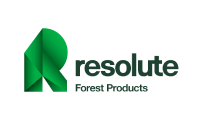In recent years, the ESG landscape has undergone a significant shift. No longer confined to check-the-box compliance, sustainability has emerged as a key lever for strategic value creation. While new regulations—from the EU’s Corporate Sustainability Reporting Directive (CSRD) to SEC’s Climate-Related Disclosure Framework —continue to drive mandatory disclosures, leading companies are reframing sustainability not as a burden, but as a competitive advantage.
How can organizations go beyond compliance and reporting to unlock long-term value through integrated, data-driven, and purpose-led sustainability strategies?
The Regulatory Landscape: Evolving But Intensifying
Regulation remains the principal catalyst for ESG progress. In Europe, the CSRD, enhanced by the new EU Omnibus Proposal, provides phased timelines and limited exemptions—giving businesses more time to prepare. However, this should not be mistaken for diminished urgency. The European Sustainability Reporting Standards (ESRS), requiring up to 1,400 data points, signal the EU’s long-term commitment to deep sustainability integration.
Meanwhile, the UK gears up to release its own Sustainability Reporting Standards (UK SRS), in line with the IFRS framework. Coupled with the expected mandatory disclosure of Climate Transition Plans under the Transition Plan Taskforce (TPT), UK businesses must brace for a more comprehensive regulatory environment in 2025 and beyond.
Beyond Compliance: Reframing Sustainability as Strategy
While meeting legal obligations is essential, a narrow focus on compliance risks operational misalignment, reputational damage, and missed opportunities for differentiation. Forward-thinking companies are using this moment to pause, reassess, and build sustainability into the core of their business strategy.
Key areas of focus include:
Data Governance: Organizations must improve data accuracy, consistency, and traceability—not just to comply, but to manage risk, drive insights, and enable scenario planning.
Integrated Thinking: ESG shouldn’t be siloed in CSR or sustainability teams. Cross-functional alignment is critical to embed sustainability into finance, operations, HR, and strategy.
Long-term Vision: Sustainability efforts must align with broader business objectives such as innovation, talent attraction, cost efficiencies, and stakeholder trust.
The Untapped Potential of Social Impact Reporting
Among the three ESG pillars, social impact reporting remains the least mature—and potentially the most differentiating. While environmental and governance metrics have become increasingly standardised, the “S” in ESG remains elusive and fragmented.
Key challenges include: A lack of standardised metrics, departmental silos (HR, CSR, leadership) diluting strategy and a disconnect between social initiatives and core business goals.
Yet herein lies an opportunity. Companies that adopt a systems-thinking approach—one that maps their total social footprint across all stakeholder touchpoints—can transform social impact from an obligation into a strategic asset. Social metrics, when integrated and aligned with brand values and performance, can enhance employee engagement, customer loyalty, and investor confidence.
Sustainability Reporting as a Tool for Innovation and Resilience
In a rapidly changing world, sustainability reporting is not merely backward-looking. It can become a strategic tool for anticipating future risks and unlocking innovation. Predictive analytics, scenario planning, and robust gap analysis allow businesses to assess how sustainability-related risks and opportunities influence long-term performance and cost of capital.
Moreover, integrating sustainability metrics into financial reporting offers a more comprehensive view of corporate health. Whether it’s quantifying emissions reduction benefits, diversity progress, or supply chain resilience, this integration demonstrates the tangible value of sustainability initiatives.
A Call to Action: Embrace the Opportunity
Compliance is just the starting point. The real question is whether companies will use this moment to get ahead—or fall behind. ESG should be deeply embedded into the fabric of business strategy, not treated as a parallel narrative.
Boards and executives must view ESG as a value creator, not a cost centre. They should use regulation as a catalyst for transformation, not a reason to delay and align purpose with performance to build resilient, trusted, and future-fit organisations.
As global ESG regulations tighten and stakeholder scrutiny intensifies, the path forward is clear: Companies that prioritise value creation over box-checking will lead in the new sustainability era. Going beyond compliance isn’t just smart governance—it’s smart business.
Attend our upcoming Europe | Certified Sustainability (ESG) Practitioner Program, Advanced Edition 2025, on June 25-26 & 27 to move beyond compliance and harness ESG as a strategic driver of innovation, resilience, and long-term value. As global regulations intensify, this Program equips Practitioners with the integrated, data-driven tools needed to embed sustainability into core business strategy and gain a competitive edge.







